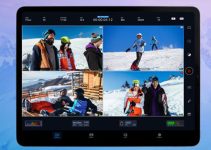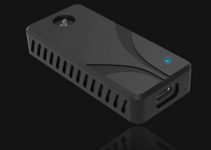In the world of cinema cameras, few offer the same bang for their buck as Blackmagic Designs’ systems. Sure, the Sony F55 is a fantastic camera and the pros like ARRI offer some of the most technically innovative platforms available but not everyone has a spare $40,000 laying around. Blackmagic has been able to corner the market on products that offer the best cinema look for under $10k for the last few years and only keep improving and expanding their offerings.
With the Blackmagic Pocket Cinema 4K camera, filmmakers now have a handy and easily portable cinema camera that films in 4K and all for the low price of $1,295. One of the main questions people have though is how to set it up properly. Filmmaker Arber Baqaj has a few tips and tricks that should help get you up and running quickly.
When accessing the menus, under Record, you have a number of options for codecs and image quality. For the most part, you will see filmmakers using ProRes as a primary codec of choice. From available flavors, ProRes 422 seems to be one of the best options since it offers high-quality image while also keeping file sizes manageable.
There may be some benefits to filming in RAW as well, however, that all depends on the project at hand. As it stands now Blackmagic RAW seems to be another excellent recording option, though at this time it’s still not available on the Pocket 4K.
Using 4K DCI is also recommended by Baqaj as it allows for a wider image that can be cropped later. Some may say that this is going to create excess work in post but you can work around this by copy and pasting the settings of an edited clip and just apply it to all remaining clips.
Another setting to consider is using the Film profile. Doing so allows for the widest possible dynamic range, giving you the best highlights and best blacks available at the top and bottom of your range. Cinematographers and directors should also consider using the setting to stop recording when frames are dropped. This will ensure that you won’t end up with corrupted files, especially when you are using a new CF card or an external drive that are still not thoroughly tested in the field.
Meanwhile, you can also leave off the setting for image sharpening since it can be done in post-production. If desired, you can also bake in a LUT to create a specific look for all footage which will simplify the post-production process.
When working through monitor settings it’s best to leave the 3D LUT option on to help judge proper exposure of your image. You also have the option to have Focus Assist on which can be beneficial in some situations, as well as the option to use a grid for your rule of thirds when framing. A cinematographer and director setting is available and is easily switched between if needed, though for solo shooters it’s recommended to leave it on cinematographer mode.
When using XLR mics, make sure you turn on phantom power under the Audio settings. Two sources are available, allowing for stereo recording. The onboard mics, though not perfect, are a fair option to record a scratch track. You can also simultaneously record with an XLR and the onboard mic by adjusting the settings.
One of the many benefits of the camera is that you are able to use the touchscreen to adjust a number of these settings on the fly. Some of the highlights include being able to adjust zebra, toggling the focus assist on and off, switching between timecode vs. real-time and shutter speed just to name a few.
You can also swipe up and down on the touch screen to hide the settings so you can see the full frame unobscured. The Pocket 4K also has a dedicated button on the back for focus, High Frame Rates (HFR) and punch in focus as well.
BMPCC 4K Highlights
- 4/3″-Sized HDR Sensor
- Record DCI 4K 4096 x 2160 up to 60 fps
- Dual Native ISO to 25,600
- 5″ Touchscreen Display
- Active Micro Four Thirds Lens Mount
- Record up to 120 fps Windowed HD
- CFast 2.0 & SD/UHS-II Card Slots
- External Recording via USB Type-C
- 13-Stop Dynamic Range, 3D LUT Support
- Includes DaVinci Resolve Studio License
So there it is, a quick and simple guide to adjusting the settings on your Blackmagic Pocket 4K Cinema camera in order to achieve the classic cinema look everyone wants. And all of this for a fraction of the cost of their pro-level counterparts. Happy shooting.
[Source: Arber Baqaj]
Order Links:
Blackmagic Design Pocket Cinema Camera 4K (B&H, Amazon)
Disclaimer: As an Amazon Associate partner and participant in B&H and Adorama Affiliate programmes, we earn a small comission from each purchase made through the affiliate links listed above at no additional cost to you.



